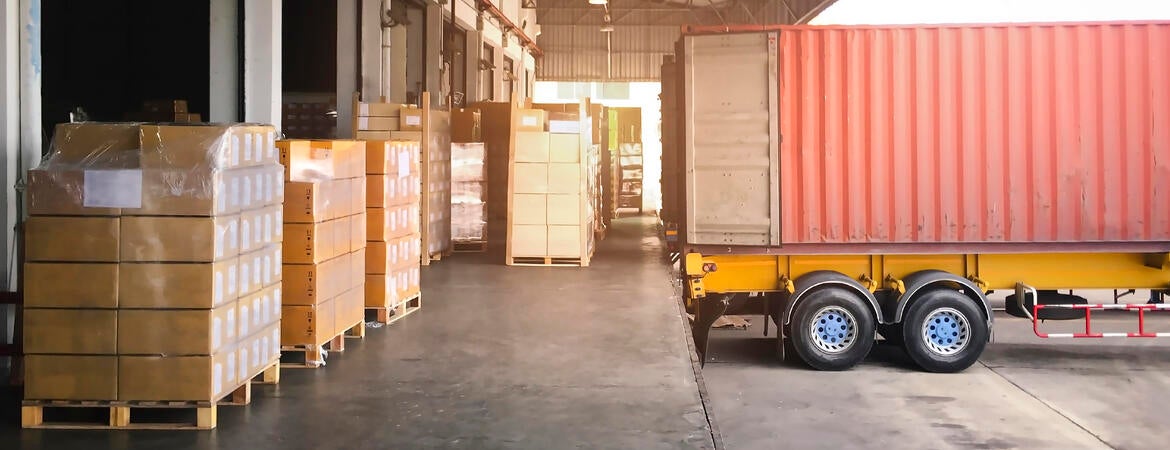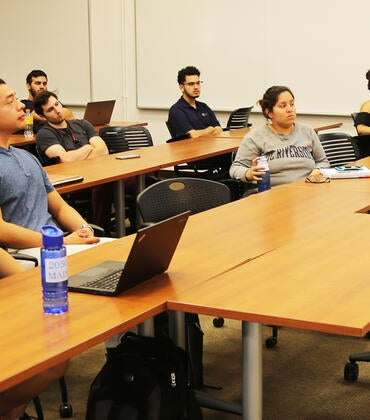
Growth in the transportation, distribution, and logistics sector in the Inland Empire has created jobs, as well as low-wage, health, and environmental issues for Inland Empire families.
The transportation, distribution, and logistics sector, referenced as TDL in a report released today by University of California, Riverside researchers and community partners, is the primary source of jobs in San Bernardino County, and the second largest employer in Riverside County. This industry significantly expanded over the past five years in the Inland Empire, adding huge employment opportunities — while simultaneously creating wage inequity and health issues.
The report, “The State of Work: Transportation, Distribution and Logistics in the Inland Empire,” is a collaborative effort between the Inland Empire Labor and Community Center at UCR; the Center for Social Innovation at UCR; the Inland Empire Labor Institute, which is the non-profit wing of the Inland Empire Labor Council the region’s AFL-CIO affiliate; and by Plug In IE, an IELI High Road Training Partnership partly funded by the California Workforce Development Board. Report results will be released today at noon at the Teamsters Local 1932 Training Center, 421 N. Sierra Way in downtown San Bernardino.
Ellen Reese, UCR’s faculty co-director of the Inland Empire Labor and Community Center and one of the lead researchers in the study, said the TDL sector is one of the top employing industries in the region, but is one that has contributed to air pollution and low-wage, unsafe, and insecure jobs.
“Our report documents these problems, the impacts of increasing workplace automation, and discusses potential strategies — for workers, community members, workforce developers, and policy-makers — to promote greater equity and environmental sustainability in the TDL sector and in our regional economy more generally,” said Reese, co-author of the book, “Unsustainable: Amazon, Warehousing, and the Politics of Exploitation” (UC Press, 2023).
The report provides new research findings that highlight the lack of living wages among truck drivers and blue-collar warehouse workers in the TDL sector. Laborers and stockers and order fillers, for example, are among the lowest paid positions, receiving a median salary of just over $25,000 per year, while packers and packagers receive a median annual salary of just over $23,000 per year.
The report also provides an overview of other recent research, which shows that as of 2023, the Inland Empire had 1 billion square feet of warehouse space — that’s equivalent to more than 17,300 football fields — and is awaiting the approval of an additional 170 million square feet, which will increase the production of various toxic emissions in the region by 10%.
Focusing on the impacts of the 3,321 warehouses larger than 100,000 square feet in the South Coast Air Basin, which includes the counties of Los Angeles, Orange, Riverside, and San Bernardino, researchers found that warehouses generate over 200 million diesel truck trips, which in turn produce over 300,000 pounds of diesel particulate matter, 30 million pounds of nitrogen oxide, and 15 billion pounds of carbon dioxide per year.
In addition to eliminating green spaces, the study found the concentration of warehouses puts residents, including children, at higher risks of asthma and cancer. Within the South Coast Air Basin, 640 schools are situated within a half mile radius of a warehouse.
The authors also cite evidence that Latino residents are disproportionately affected by these problems since in Riverside County 61% of Latino residents live within 300 feet of a warehouse, though Latino residents make up only 46% of the population. In San Bernardino County, the comparable figures are 61% and 50%, respectively.
Meanwhile, Black and Latino residents are disproportionately employed as blue-collar warehouse workers and truck drivers.
The study, based on qualitative and quantitative analysis, was done over one year. Researchers interviewed 32 current and former TDL workers and include 11 extensive profiles on those study participants.
The authors conclude by offering solutions, such as increased training through high road partnerships between employers and training providers that create pathways to high-quality jobs and offer various other organizing, economic development, and policy strategies that aim to improve regional air quality as well as the health and well-being of workers and local residents.
Header image: GettyImages






